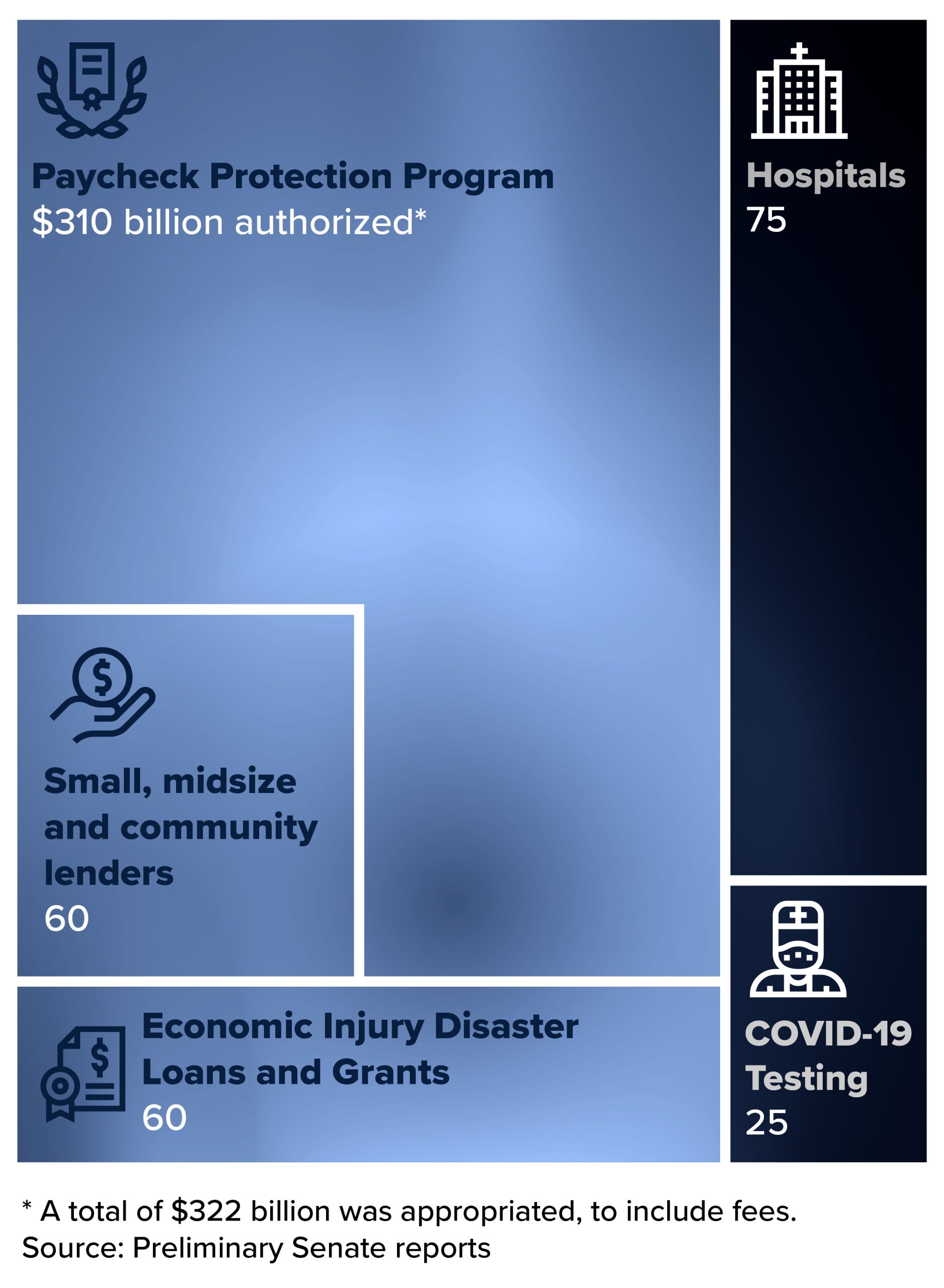On April 23rd, Congress passed a $484 billion bill, and on April 23rd the House voted to pass this ‘phase 3.5’ stimulus package. The Senate met earlier this week and voted in support of the bill unanimously, in which they believe provides additional support, is more effective and inclusive, and addresses urgent national priorities. The bill also outlines tasks for the Trump Administration to help expand on United States testing capacity in a plan that will be updated every 90 days.
Of the $484 billion in relief, $310 billion is funding for the Paycheck Protection Program (PPP), a small-business loan fund. The PPP was part of the $2.2 trillion stimulus bill passed last month with the goal to help small firms cover essential expenses, like payroll, for two months. Last week, the PPP allocated and disbursed $350 billion.
Funding will also be allocated to increase COVID-19 testing and tracing. In the new stimulus bill, $75 billion will help cover coronavirus expenses and lost revenue in hospitals. An additional $25 billion is allocated for the manufacturing and purchases of coronavirus testing, $11 billion of which will be given to states and local governments to administer tests and conduct contact tracing. A separate loan program, known as the Economic Injury Disaster Loan fund that quickly delivers a mix of grants and loans, will receive $60 billion from the legislation.










